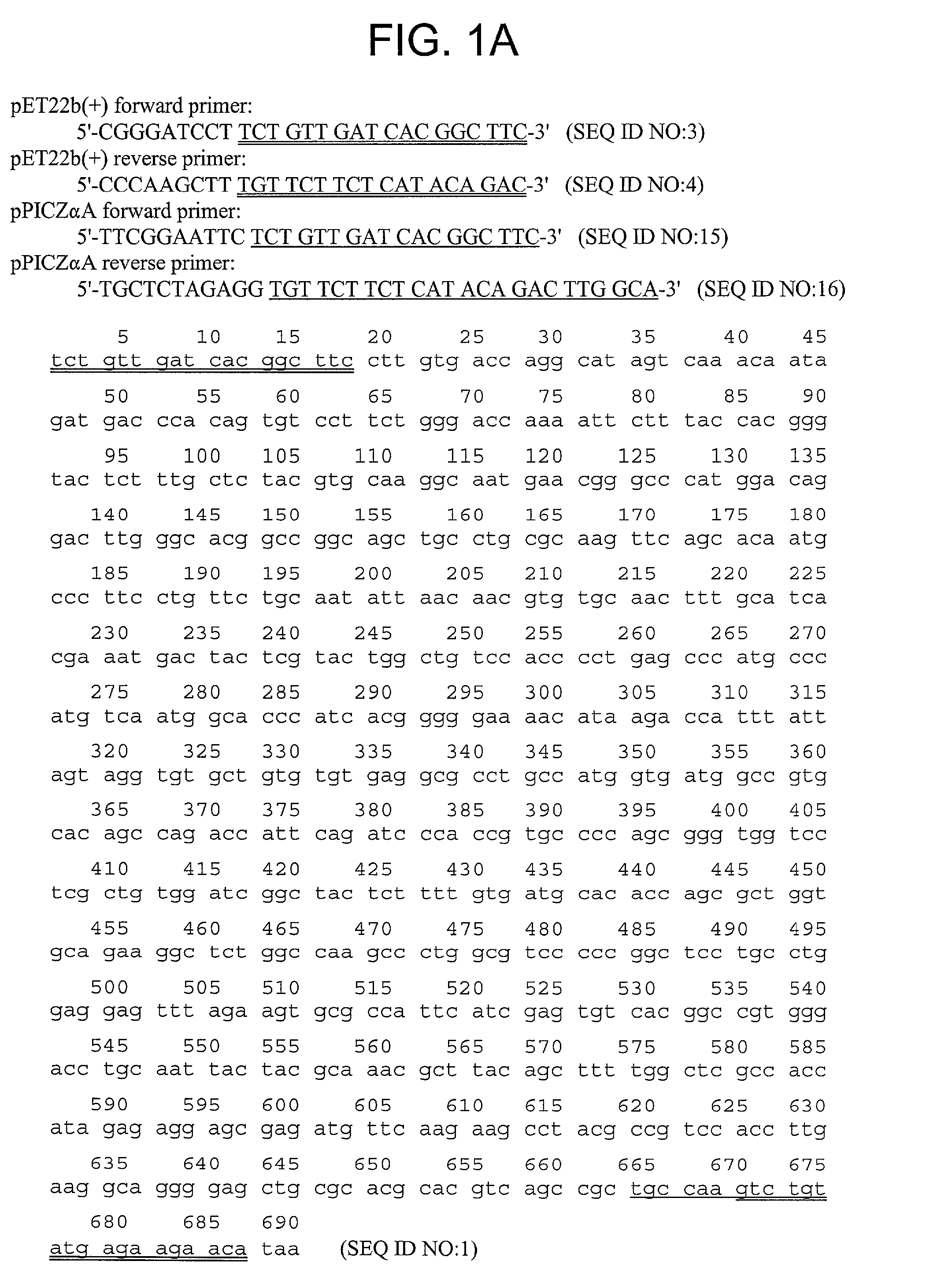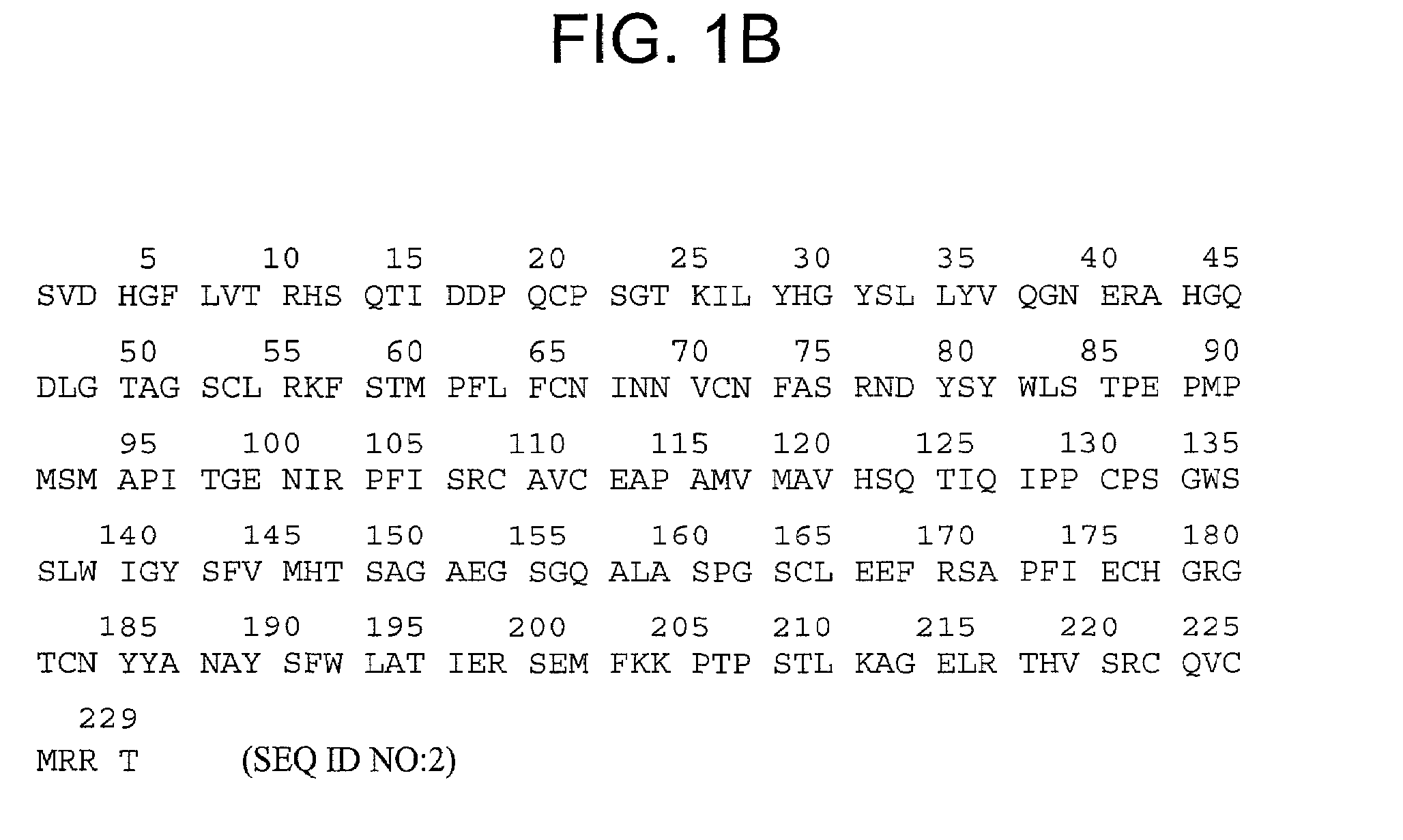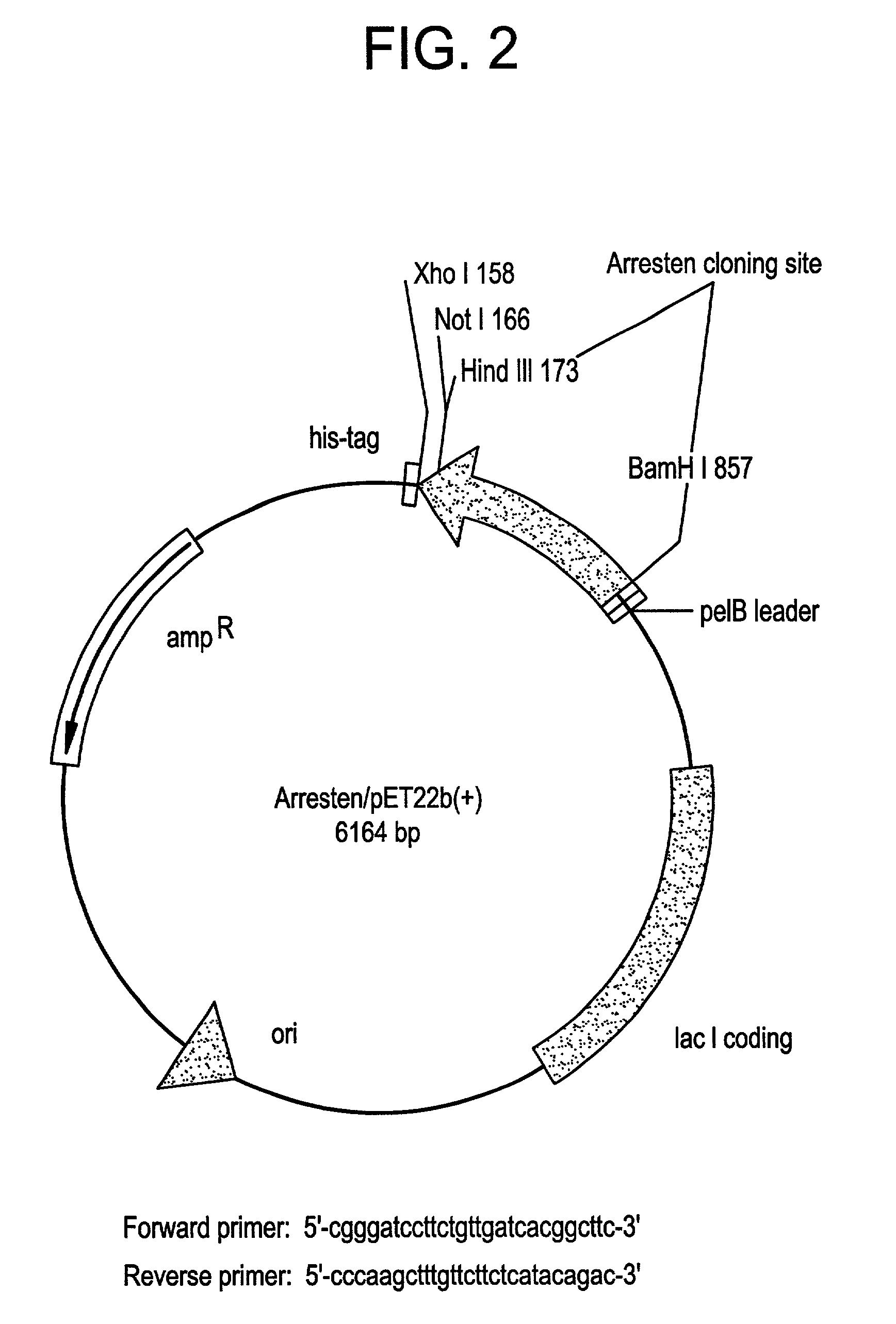Anti-angiogenic proteins and fragments and methods of use thereof
a technology which is applied in the field of antiangiogenic proteins and fragments, can solve the problems of unclear and unrecognized basement membrane organization and angiogenesis, and achieve the effect of preventing cell migration or endothelial cell proliferation
- Summary
- Abstract
- Description
- Claims
- Application Information
AI Technical Summary
Benefits of technology
Problems solved by technology
Method used
Image
Examples
example 1
Isolation of Native Arresten
[0301]Arresten can be generated in milligram quantities from human placenta and amnion tissue. The protocol for isolating this and similar proteins has been described by others (e.g., Langeveld, J. P. et al., 1988, J. Biol. Chem. 263:10481-8; Saus, J. et al., 1988, J. Biol. Chem. 263:13374-80; Gunwar, S. et al., 1990, J. Biol. Chem. 265:5466-9; Gunwar S. et al., 1991, J. Biol. Chem. 266:15318-24; Kahsai, T. Z. et al., 1997, J. Biol. Chem. 272:17023-32). Production of the recombinant form of Arresten is described in Neilson et al. (1993, J. Biol. Chem. 268:8402-6). The protein can also be expressed in 293 kidney cells (e.g., by the method described in Hohenester, E. et al., 1998, EMBO J. 17:1656-64). Arresten can also be isolated according to the method of Pihlajaniemi, T. et al. (1985, J. Biol. Chem. 260:7681-7).
[0302]The nucleotide (SEQ ID NO:1) and amino acid (SEQ ID NO:2) sequence of the α1 chain of the NC1 domain of Type IV collagen are shown in FIG. ...
example 2
Recombinant Production of Arresten in E. Coli
[0304]The sequence encoding Arresten was amplified by PCR from the al NC1(IV) / pDS vector (Neilson, E. G. et al., 1993, J. Bio. Chem. 268:8402-5) using the forward primer 5′-CGG GAT CCT TCT GTT GAT CAC GGC TTC-3′ (SEQ ID NO:3) and the reverse primer 5′-CCC AAG CTT TGT TCT TCT CAT ACA GAC-3′ (SEQ ID NO:4). The resulting cDNA fragment was digested with BamHI and HindIII and ligated into predigested pET22b(+) (Novagen, Madison, Wis., USA). This construct is shown in FIG. 2. This placed Arresten downstream of and in frame with The pelB leader sequence, allowing for periplasmic localization and expression of soluble protein. Additional vector sequence was added to the protein encoding amino acids MDIGINSD (SEQ ID NO:13). The 3′ end of the sequence was ligated in frame with the polyhistidine tag sequence. Additional vector sequence between the 3′ end of the cDNA and the his-tag encoded the amino acids KLAAALE (SEQ ID NO:14). Positive clones wer...
example 3
Expression of Arresten in 293 Embryonic Kidney Cells
[0307]The pDS plasmid containing α1(IV) NC1 was used to amplify Arresten in a way that it would add a leader signal sequence in-frame into the pcDNA 3.1 eukaryotic expression vector (InVitrogen, San Diego, Calif., USA). The leader sequence from the 5′ end of the full length α1(IV) chain was cloned 5′ to the NC1 domain to enable protein secretion into the culture medium. The Arresten-containing recombinant vectors were sequenced using flanking primers. Error-free cDNA clones were further purified and used for in vitro translation studies to confirm protein expression. The Arresten-containing plasmid and control plasmid were used to transfect 293 cells using the calcium chloride method. Transfected clones were selected by geneticin antibiotic treatment (Life Technologies / Gibco BRL, Gaithersburg, Md., USA). The cells were passed for three weeks in the presence of the antibiotic until no cell death was evident. Clones were then expande...
PUM
| Property | Measurement | Unit |
|---|---|---|
| volume | aaaaa | aaaaa |
| volume | aaaaa | aaaaa |
| concentrations | aaaaa | aaaaa |
Abstract
Description
Claims
Application Information
 Login to View More
Login to View More - R&D
- Intellectual Property
- Life Sciences
- Materials
- Tech Scout
- Unparalleled Data Quality
- Higher Quality Content
- 60% Fewer Hallucinations
Browse by: Latest US Patents, China's latest patents, Technical Efficacy Thesaurus, Application Domain, Technology Topic, Popular Technical Reports.
© 2025 PatSnap. All rights reserved.Legal|Privacy policy|Modern Slavery Act Transparency Statement|Sitemap|About US| Contact US: help@patsnap.com



